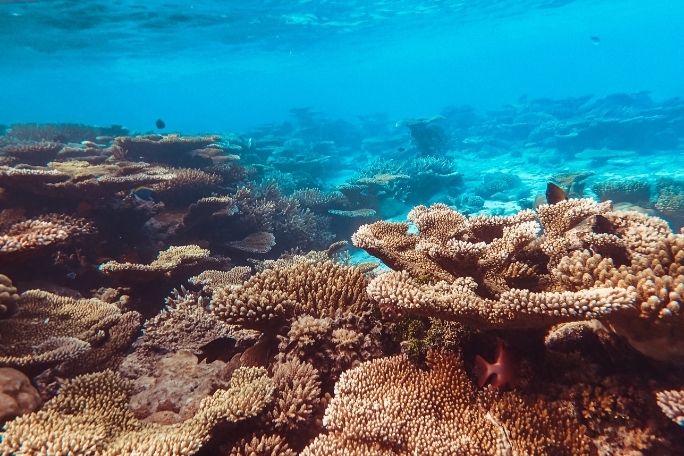Lesson summary
Students investigate the process of ocean acidification, and in particular the role of water temperature in CO2 absorption. They begin the activity by looking at an image describing ocean acidification and responding to associated questions. They are then asked to design an experiment aimed at demonstrating the role of water temperature in CO2 absorption. Students will then summarise their knowledge of ocean acidification in the form or an advertising campaign.
These activities “… are an invaluable tool for teachers to address climate change in an educationally relevant, scientifically sound, and action-based way.” – Tim Flannery (Read more)
Learning intentions:
Students will...
- understand how CO2 is absorbed by sea water
- design and conduct and experiment to demonstrate the role of water temperature in CO2 absorption
- understand the cause and consequences of ocean acidification.
Lesson guides and printables
Lesson details
Curriculum mapping
Australian Curriculum content descriptions:
Year 10 Science:
- Global systems, including the carbon cycle, rely on interactions involving the biosphere, lithosphere, hydrosphere and atmosphere (ACSSU189)
Syllabus Outcomes: SC5-12ES.
Time required: 60 mins
Level of teacher scaffolding: Medium – oversee activity.
Resources Required
- Internet access student worksheets
- Optional: soft drinks and ice.
- Key reading from We Are the Weather Makers: Chapter 3 – The Greenhouse Gases
- Further reading from the book: Chapter 19 – How Can They Keep On Moving, Chapter 15 – Rising Waters
Additional info
Cool Australia would like to acknowledge:
- Tim Flannery
- David Harding, Rose Iser, Sally Stevens
- Text Publishing and Purves Environmental Fund
- Climate Council


Welcome back!
Don't have an account yet?
Log in with:
By signing up to Cool.org you consent and agree to Cool's privacy policy to
store, manage and process your personal information. To read more, please see
our privacy policy here(Opens in new tab).
Create your free Cool.org account.
Many of our resources are free, with an option to upgrade to Cool+ for premium content.
Already have an account?
Sign up with:
By signing up to Cool.org you consent and agree to Cool's privacy policy to
store, manage and process your personal information. To read more, please see
our privacy policy here(Opens in new tab).